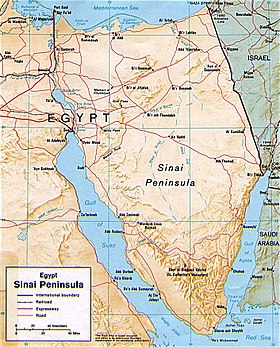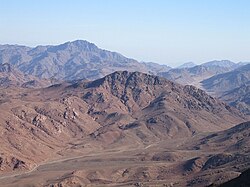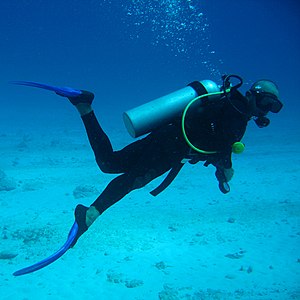SINAI...THE LAND OF PROPHETS..سيناء ارض الانبياء
The Sinai Peninsula or Sinai (Arabic: سيناء sīnā' ; Hebrew סיני) is a triangular peninsula in Egypt about 60,000 km2 (23,000 sq mi) in area. It is situated between the Mediterranean Sea to the north, and the Red Sea to the south, and it is the part of Egyptian territory located in Asia as opposed to Africa. The bulk of the peninsula is divided into two governorates (with three more splitting the Suez Canal area), and has a population of approximately 500,000 people. The region has historically been the center of conflict between various political factions, based largely on its location. In addition to periods of direct rule by Egyptian governments (including the Ayyubids, the Mamluks, the Muhammad Ali Dynasty, and the modern Egyptian republic), it was like the rest of Egypt also occupied and controlled by the Ottoman Empire, and the United Kingdom which occupied Egypt from 1882 till 1956. Israel gained control of the Sinai in the Suez Crisis of 1956 and during the Six Day War of 1967. In the October War of 1973, it was the site of fierce fighting between Egyptian and Israeli forces. In 1982, after the Israel-Egypt Peace Treaty of 1979, Israel withdrew from the entirety of Sinai. Today, Sinai has become a tourist destination due to its natural setting, rich coral reefs, and biblical history. Mount Sinai is one of the most religiously significant places in Abrahamic faiths.
Sinai History
Sinai was inhabited by the Monitu and was called Mafkat or Country of Turquoise.[2] From the time of the First dynasty or before, the Egyptians mined turquoise in Sinai at two locations, now called by their Arabic names Wadi Maghareh and Serabit el-Khadim. The mines were worked intermittently and on a seasonal basis for thousands of years. Modern attempts to exploit the deposits have been unprofitable. These may be the first known mines. According to the Jewish tradition the peninsula was crossed by the Israelites during The Exodus from Egypt as detailed in the Hebrew Bible. This included numerous halts over a 40 year period of travel in AM 2448 (1313 BCE) in the Jewish tradition. The peninsula was governed as part of Egypt under the Mamluk Sultanate from 1260 until 1517, when the Ottoman Sultan, Selim the Grim, defeated the Mamluks at the Battles of Marj Dabiq and al-Raydaniyya, and incorporated Egypt into the Ottoman Empire. From then until 1906, Sinai was administered by the Ottoman provincial government of the Pashalik of Egypt, even following the establishment of the Muhammad Ali Dynasty's rule over the rest of Egypt in 1805. In 1906, the Ottoman Porte formally transferred administration of Sinai to the Egyptian Government, which essentially meant that it fell under the control of the United Kingdom, who had occupied and largely controlled Egypt since 1882. The border imposed by the British runs in an almost straight line from Rafah on the Mediterranean shore to Taba on the Gulf of Aqaba. This line has served as the eastern border of Egypt ever since.
At the beginning of the 1948 Arab-Israeli War, Egyptian forces invaded the former British Mandate of Palestine from Sinai as part of an attack by several Arab armies against the newly declared State of Israel. For a period during the war, Israeli forces entered the north-eastern corner of Sinai. With the exception of the Gaza Strip, which came under the administration of the All-Palestine Government (and was effectively put under Egyptian military administration), the western frontier of the former Mandate of Palestine became the Egyptian-Israeli frontier under the 1949 Armistice Agreement. In 1956, Egypt nationalized the Suez Canal on the western side of the Sinai Peninsula, and thereafter prohibited Israeli ships from using the Canal, in a violation of the armistice agreement signed in 1949. Egypt also prohibited ships traveling to and from Israel from using Egyptian territorial waters on the eastern side of the Peninsula, effectively imposing a blockade on the Israeli port of Eilat. Subsequently, Israeli forces, aided by Britain, and France (which sought to reverse the nationalization and regain control over the Suez Canal), invaded Sinai and occupied much of the Peninsula within a few days (see Suez Crisis). Several months later, following strong pressure from the United States and the Soviet Union, Britain, France and Israel withdrew their forces from Sinai. Thereafter, the United Nations Emergency Force (UNEF) was stationed in Sinai to prevent renewed conflict between the two states in Sinai.
Egypt-Israel border. Looking north from the Eilat Mountains
In 1967, Egypt reinforced its military presence in Sinai, renewed the blockade of Eilat, and on May 16 ordered the UNEF out of Sinai with immediate effect. Secretary-General U Thant eventually complied and ordered the withdrawal without Security Council authorization. After these Egyptian violations of the 1956 ceasefire agreements, in addition to Egyptian threats to attack and destroy the Jewish state, Israel invaded Sinai, commencing the Six-Day War. In this war, the Egyptian army was defeated, and Israel captured and occupied the entire peninsula. The Suez Canal, the east bank of which was now occupied by Israel, was closed. In the Yom Kippur War of 1973, Egyptian engineering forces built pontoon bridges to cross the Suez Canal, and stormed the supposedly impregnable Bar-Lev Line while many Israeli soldiers were observing a Jewish religious fast Yom Kippur. Though the Egyptians maintained control of most of the east bank of the Canal, in the later stages of the war, the Israeli military crossed the southern section of Canal, cutting off the Egyptian 3rd Army, and occupied a section of the west bank. After the war, as part of the subsequent Sinai Disengagement Agreements, Israel withdrew from the Canal, with Egypt's agreeing to permit passage of Israeli ships.
In 1979, Israel and Egypt signed a peace treaty in which Israel agreed to withdraw from the entirety of Sinai. Israel subsequently withdrew in several stages, ending in 1982. The Israeli pull-out involved dismantling almost all Israeli settlements, including the town of Yamit in north-eastern Sinai. The exception was Ofira, which had been developed into a resort town, which reverted to its Egyptian name of Sharm el-Sheikh. The treaty allowed monitoring of the Sinai by the Multinational Force and Observers, and limited the number of Egyptian military forces in the Peninsula. Over the years, Sinai was a site of several terrorist attacks targeting Westerners, Israelis and Egyptian tourists.
SINAI NOWDAYS
Over the past 30 years the Sinai has become a tourist destination due to its natural setting, rich coral reefs, and biblical history. The most popular tourist destination in Sinai are Mount Sinai ("Jabal Musa") and St. Catherine's Monastery, which is considered to be the oldest working Christian monastery in the world, and the beach resorts of Sharm el-Sheikh, Dahab, Nuweiba and Taba. Most tourists arrive through Eilat, Israel and the Taba Border Crossing, by train or bus from Cairo or by Ferry from Aqaba in Jordan.
Most of the Sinai Peninsula is divided among two Egyptian governorates, or provinces, named Ganub Sina ("South Sinai") and Shamal Sina ("North Sinai"). Three more governates span the Suez Canal, crossing into African Egypt. el-Sewais ("the Suez") is on the southern end of the Suez Canal, el-Isma'ileyyah in the center, and Port Said in the north. Approximately 66,500 people live in Ganub Sina and 314,000 live in Shamal Sina. Port Said itself has a population of roughly 500,000 people. Portions of the populations of el-Isma'ileyyah and el-Suweis live in Sinai, while the rest live on the western side of the Suez Canal. The combined population of these two governorates is roughly 1.3 million (only a part of that population live in the Sinai, while the rest live on the western side of the Suez Canal). Sinai is one of the coldest provinces in Egypt because of its high altitudes and mountainous topographies. Winter temperatures in some of Sinai's cities and towns reach −16 °C (3 °F). Large numbers of Egyptians from the Nile Valley and Delta have moved to the area to work in tourism, while at the same time development has negatively affected the native Sinai Bedouin population. In order to help alleviate these problems, various NGOs have begun to operate in the region including the Makhad Trust, a UK charity which assists the Bedouin in developing a sustainable income while protecting Sinai's natural environment, heritage and culture.















0 comments
Write Down Your Responses